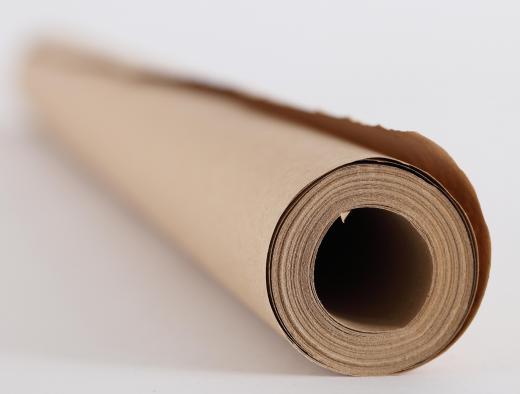Deinking is an industrial process that removes ink and adhesive material from recycled paper. A pulp washing process removes small particles of ink by rinsing with a mixture of water and dispersants, which are used to break down oils. Larger particles and adhesives are removed in a flotation process. Surfectants, chemicals used to assist in cleaning, are combined with air and injected into a pulp suspension. This causes the contaminants to loosen and float to the surface, where they can be removed.
The recycling of paper causes 35 percent less water pollution and 74 percent less air pollution than paper production from raw materials. Printed material discarded after use, such as newspapers, magazines, and office waste, comprise a significant percentage of all paper amenable to recycling. The treatment of this material plays an important role in efforts toward pollution control and sustainability. For printed material, the entire recycling process is sometimes referred to as deinking.

Sorted waste paper is chopped into small pieces by a pulper. Water and chemicals area added to adjust pH level, assist in bleaching and act as an emulsifying agent. The material leaves the pulper as thick slurry headed to a centrifugal cleaning device. The rotational force of this machine ejects contaminants larger than the pulp fibers through screens.

The literal deinking stage follows and relies on two main processes, including washing and floatation. The washing process is most often used in North America for making hygenic paper products. The pulp slurry is rinsed with water and dispersants that remove fine ink particles when water is forced from the mixture. Up to 80 percent of the original paper fiber is recovered. This method has also been successfully used in processing old newspapers for new newsprint stock.
In Europe, the most commonly used deinking process is froth flotation. Chemical surfectants are added to the pulp slurry. These chemicals form a frothy layer on top of the slurry. Air bubbles are injected into the mixture that carry the ink to the surface, where it is trapped in the foam layer. When this process is used on old newsprint, about one third of the total mix will be old magazines added for strength.
Of the two processes, the washing method is superior at removing smaller sized ink particles. The floatation method delivers the higher percentage of original pulp fiber. This process also produces less contaminated water. A combination of both processes is often used in the high quality deinking of office waste. The deinked fiber may pass through an additional beaching stage before being used in papermaking.
Despite the ecological benefits of paper recycling, deinking's higher cost can be prohibitive. The two processes are less successful at treating the products of some modern printing methods, as well. Techniques to enhance and economize deinking may be helpful in encouraging the process.
